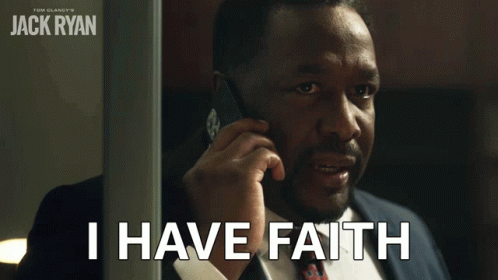Ever rehearsed a conversation a thousand times in your head, imagining all the worst possible outcomes, only to have it go surprisingly well? That's Genesis 33 in a nutshell! After 20 years of separation, a stolen blessing, and a night of divine wrestling, Jacob finally faces his brother Esau—the same brother who once vowed to kill him. Jacob approaches limping (thanks to that hip dislocation from his wrestling match with God) and bowing seven times, expecting the worst. But instead of revenge, Esau runs to him, embraces him, and weeps on his neck! Talk about plot twists! This isn't just a touching family reunion story—it's a masterclass in reconciliation that reveals how divine encounters transform not just our relationship with God, but with the very people we've wounded.
The Delicate Dance of Reconciliation
Genesis 33 moves with the cautious hope of someone approaching a relationship they've damaged. "Jacob looked up and there was Esau, coming with his four hundred men." This tense moment sets the stage for everything that follows. The pattern is remarkable:
Thanks for reading! Subscribe for free to receive new posts and support my work.
Fear lingers → Careful approach begins → Unexpected grace erupts → Relationship restored → New paths diverge
This isn't just storytelling – it's revealing something profound about reconciliation. We approach with fear and strategy, but healing often comes through grace we never expected and couldn't orchestrate. Each verse builds upon the previous one, creating an intricate portrait of how broken relationships can be restored after divine transformation.
Breaking Down the Chapter
Verses 1-3: Jacob arranges his family and approaches Esau with humility
Verses 4-7: Esau's surprising welcome and introduction to Jacob's family
Verses 8-11: Jacob insists Esau accept his gifts as a gesture of peace
Verses 12-16: Negotiating their journey forward separately but peacefully
Verses 17-20: Jacob settles at Succoth, then moves to Shechem
But here's what's fascinating – notice how the chapter flows? Just after Jacob's night of wrestling with God, he now has the courage to face his brother. The divine encounter in chapter 32 directly enables the human reconciliation in chapter 33. It's not coincidental—it's sequential. We cannot truly reconcile with others until we've been transformed by God.
From Fear to Faith
When we see Jacob's approach to Esau, we witness a man transformed. The same Jacob who once hid behind his mother's schemes now places himself at the front of his family, limping toward danger. "He himself went on ahead and bowed down to the ground seven times as he approached his brother" (Genesis 33:3).
This is extraordinary. The man who once grasped his brother's heel in competition now bows seven times in submission. The schemer who stole a blessing through deception now freely gives extravagant gifts. The runner who fled for his life now walks directly toward the very threat he once escaped.
The most powerful evidence of spiritual transformation isn't mystical experiences or religious knowledge—it's our willingness to walk toward the very relationships we've damaged with humility and hope.
QUICK INSIGHT
Jacob's encounter with God didn't just change his name—it changed his approach to conflict. Before wrestling with God, Jacob relied on strategy and manipulation. After wrestling with God, he led with vulnerability and generosity.
Look at the sequence of Jacob's actions in Genesis 33:
He positions himself in front (v.3) - Taking responsibility rather than hiding
He bows seven times (v.3) - Demonstrating humility, not entitlement
He repeatedly calls Esau "my lord" (v.8,13,14) - Honoring rather than competing
He insists Esau keep his gifts (v.11) - Giving freely rather than taking
He accepts Esau's forgiveness but declines direct help (v.15) - Independence with respect
This transformation reveals something profound: Wrestling with God changes how we wrestle with people.
The Mystery of Esau's Heart
Perhaps the most surprising element of Genesis 33 isn't Jacob's transformation but Esau's forgiveness. The text gives us a beautiful, unexpected moment: "But Esau ran to meet Jacob and embraced him; he threw his arms around his neck and kissed him. And they wept" (Genesis 33:4).
What changed Esau's heart? The text doesn't tell us explicitly, but we can see God's hand at work. The same God who transformed Jacob had been working in Esau's life too. This reveals a crucial truth: While we focus on our own spiritual journeys, God is simultaneously working in the hearts of those we'll eventually need to reconcile with.
THE THEOLOGY OF TEARS
Have you noticed how often reconciliation involves tears in scripture? When Joseph finally reveals himself to his brothers, they weep together. When the prodigal son returns to his father, the embrace is emotional. And here, when Jacob and Esau meet after 20 years of estrangement, they weep on each other's necks.
These aren't incidental details—they reveal something profound about reconciliation. Tears represent the vulnerability that bridges relational divides. They acknowledge both pain and healing, both loss and restoration. They're the physical manifestation of emotional walls coming down.
Jacob and Esau's tears wash away two decades of fear, anger, and separation. They create a sacred space where brothers can begin again, not by ignoring the past but by allowing grace to transcend it.
In a world that often equates strength with emotional stoicism, Genesis 33 reminds us that true strength is found in the courage to weep with those we've wounded or those who have wounded us. Reconciliation isn't just about words exchanged—it's about emotions expressed and received.
When was the last time you allowed yourself to weep in the process of reconciliation?
Christ as our Reconciler
Genesis 33 prefigures Christ's ministry of reconciliation in powerful ways. Just as Jacob approaches Esau bearing gifts and bowing in humility, Jesus approaches humanity bearing the gift of himself. Jacob's limp symbolizes the vulnerability required for true reconciliation—a principle Jesus would ultimately demonstrate on the cross.
The unexpected embrace between estranged brothers anticipates how Christ reconciles us to God and to each other. Paul would later write, "For he himself is our peace, who has made the two groups one and has destroyed the barrier, the dividing wall of hostility" (Ephesians 2:14).
Most profoundly, the brothers' tearful reunion foreshadows the emotional restoration that comes through Christ—how the gospel heals not just theological divisions but relational wounds, allowing us to weep together in both sorrow and joy.
WALK THRU TRIVIA CHALLENGE
Question: After their reconciliation in Genesis 33, Jacob and Esau briefly discussed traveling together, but ultimately went separate ways. What reason did Jacob give for not traveling alongside Esau?
A) He wanted to avoid potential future conflicts as their families grew together
B) He was concerned about the pace of travel with young children and livestock
C) He was still secretly afraid Esau might change his mind about forgiveness
D) He needed to travel to Bethel where God had instructed him to build an altar
Check your answer below!
Answer: B) He was concerned about the pace of travel with young children and livestock
Genesis 33:13-14 says, "But Jacob said to him, 'My lord knows that the children are tender and that I must care for the ewes and cows that are nursing their young. If they are driven hard just one day, all the animals will die. So let my lord go on ahead of his servant, while I move along slowly at the pace of the flocks and herds before me and the pace of the children, until I come to my lord in Seir.'"
Reconciled but Separate Paths
One of the most interesting aspects of Genesis 33 is that after this beautiful reconciliation, Jacob and Esau don't actually join their lives together. They reconnect, forgive, make peace—but then they go separate ways.
Esau returns to Seir, and Jacob settles first at Succoth and then at Shechem. This teaches us something profound about reconciliation: it doesn't always mean restored intimacy or shared daily life. Sometimes it means making peace and blessing each other on different journeys.
This isn't a lesser form of reconciliation—it's simply a recognition that forgiveness doesn't require forced closeness. Jacob and Esau had become different men with different callings. Their reconciliation acknowledged their shared past while respecting their distinct futures.
In our own lives, some reconciled relationships will resume close communion, while others will involve peaceful distance. Genesis 33 gives us permission to recognize that both can be faithful expressions of restored relationship.
Your Turn to Walk Through
As you read Genesis 33 again (and I encourage you to do so), consider:
How does Jacob's approach to Esau demonstrate his spiritual transformation?
Where do you need to take the initiative in approaching someone you've wounded?
What would genuine reconciliation look like in your most strained relationship—even if it doesn't mean resumed closeness?
Remember, this isn't just an ancient family drama—it's a reminder that divine encounters should lead to human reconciliation, and that God can transform both sides of a broken relationship simultaneously.
Join the Conversation
Genesis 33 shows us that reconciliation often requires both divine transformation and human initiative. Like Jacob, we might need a profound encounter with God before we have the courage to face those we've wounded. And like Esau, we might find our hearts softened toward those who have hurt us in ways we never expected.
The story reminds us that Jesus doesn't just reconcile us to God—He gives us the ministry of reconciliation in our human relationships too. Sometimes that means limping toward difficult conversations. Sometimes it means running to embrace those who approach us in humility. Sometimes it means weeping together over both pain and restoration. The point is: we need Jesus to reconcile with people.
What relationship in your life needs the kind of reconciliation we see in Genesis 33? How might God be working on both sides of that relationship, even now, preparing the way for an unexpected reunion?










